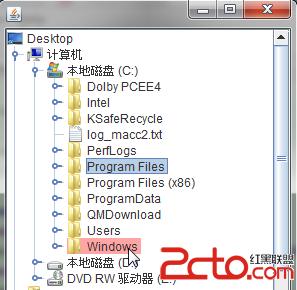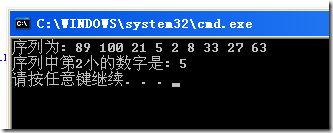axis2开发webservice之编写Axis2模块(Module)
axis2中的模块化开发,可以让开发人员自由的添加自己所需的模块,提高开发效率,降低开发的难度。
Axis2可以通过模块(Module)进行扩展。Axis2模块至少需要有两个类,这两个类分别实现了Module和Handler接口。开发和使用一个Axis2模块的步骤如下:
1. 编写实现Module接口的类。Axis2模块在进行初始化、销毁等动作时会调用该类中相应的方法)。
2. 编写实现Handler接口的类。该类是Axis2模块的业务处理类。
3. 编写module.xml文件。该文件放在META-INF目录中,用于配置Axis2模块。
4. 在axis2.xml文件中配置Axis2模块。
5. 在services.xml文件中配置Axis2模块。每一个Axis2模块都需要使用<module>元素引用才能使用。
6. 发布Axis2模块。需要使用jar命令将Axis2模块压缩成.mar包(文件扩展名必须是.mar),然后将.mar文件放在<Tomcat安装目录>\webapps\axis2\WEB-INF\modules目录中。
先看一下在axis2中什么是module和handler,如下是官方解释


先来编写一个WebService类,代码如下:
[java]
package module;
public class MyService
{
public String getGreeting(String name)
{
return "您好 " + name;
}
}
下面我们来编写一个记录请求和响应SOAP消息的Axis2模块。当客户端调用WebService方法时,该Axis2模块会将请求和响应SOAP消息输出到Tomcat控制台上。
第1步:编写LoggingModule类
LoggingModule类实现了Module接口,代码如下:
[java]
package module;
import org.apache.axis2.AxisFault;
import org.apache.axis2.context.ConfigurationContext;
import org.apache.axis2.description.AxisDescription;
import org.apache.axis2.description.AxisModule;
import org.apache.axis2.modules.Module;
import org.apache.neethi.Assertion;
import org.apache.neethi.Policy;
public class LoggingModule implements Module
{
// initialize the module
public void init(ConfigurationContext configContext, AxisModule module)
throws AxisFault
{
System.out.println("init");
}
public void engageNotify(AxisDescription axisDescription) throws AxisFault
{
}
// shutdown the module
public void shutdown(ConfigurationContext configurationContext)
throws AxisFault
{
System.out.println("shutdown");
}
public String[] getPolicyNamespaces()
{
return null;
}
public void applyPolicy(Policy policy, AxisDescription axisDescription)
throws AxisFault
{
}
public boolean canSupportAssertion(Assertion assertion)
{
return true;
}
}
在本例中LoggingModule类并没实现实际的功能,但该类必须存在。当Tomcat启动时会装载该Axis2模块,同时会调用LoggingModule类的init方法,并在Tomcat控制台中输出“init”。
第2步:编写LogHandler类
LogHandler类实现了Handler接口,代码如下:
[java]
package module;
import org.apache.axis2.AxisFault;
import org.apache.axis2.context.MessageContext;
import org.apache.axis2.engine.Handler;
import org.apache.axis2.handlers.AbstractHandler;
import org.apache.commons.logging.Log;
import org.apache.commons.logging.LogFactory;
public class LogHandler extends AbstractHandler implements Handler
{
private static final Log log = LogFactory.getLog(LogHandler.class);
private String name;
public String getName()
{
return name;
}
public InvocationResponse invoke(MessageContext msgContext)
throws AxisFault
{
// 向Tomcat控制台输出请求和响应SOAP消息
log.info(msgContext.getEnvelope().toString());
return InvocationResponse.CONTINUE;
}
public void revoke(MessageContext msgContext)
{
log.info(msgContext.getEnvelope().toString());
}
public void setName(String name)
{
this.name = name;
}
}
LogHandler类的核心方法是invoke,当使用该Axis2模块的WebService的方法被调用时,LogHandler类的invoke方法被调用。
第3步:编写module.xml文件
在META-INF目录中建立一个module.xml文件,内容如下:
[html]
<module name="logging" class="module.LoggingModule">
<InFlow>
<handler name="InFlowLogHandler" class="module.LogHandler">
<order phase="loggingPhase"/>
</handler>
</InFlow>
<OutFlow>
<handler name="OutFlowLogHandler" class="module.LogHandler">
<order phase="loggingPhase"/>
</handler>
</OutFlow>
<OutFaultFlow>
<handler name="FaultOutFlowLogHandler" class="module.LogHandler">
<order phase="loggingPhase"/>
</handler>
</OutFaultFlow>
<InFaultFlow>
<handler name="FaultInFlowLogHandler" class="module.LogHandler">
补充:Web开发 , 其他 ,




